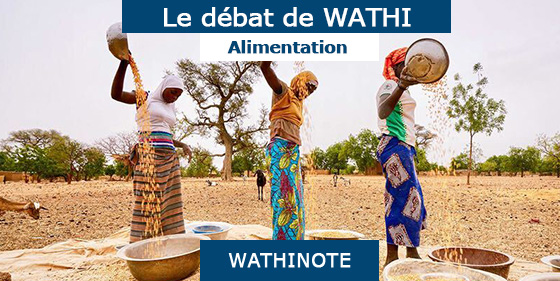

Author: Faith Ditlhong
Site of publication: CIO
Type of publication: Article
Date of publication: September 12, 2019
The cumulative view provided by the confluence of machine learning and decision making in conjunction with third-party data all hosted in the cloud, has given rise to artificial intelligence (AI) in agriculture. The ability of agricultural equipment to think, predict and even advise farmers presents Africa with an historic opportunity to meet the continent’s own food requirements. AI also presents Africa with the capability to integrate its agricultural sector into global agricultural value chains.
According to GeoFarm South Africa, farms in the United States are 27% more productive than South African farms compared across the same area, moisture levels and soil types. While, superficially, this is because farms in the United States are more mechanised, a closer examination of what these agricultural machines are doing shows just how fundamentally AI has changed the way humans farm, and how dramatically these changes have increased agricultural yields.
What has made this machine intelligence possible?
Firstly, a combine harvester can, today, measure the quantity of material it is harvesting while also recording its quality and weight. At the same time, it can calculate the rate of harvesting, yield per hectare, area cut verses area remaining, predicting time of completion while also informing on the condition of the machines’ mechanical and electronic systems. The machine will also report on how clean the material is and make automatic adjustments to ensure optimal performance. All this information is recorded on the machine and is available to the farmer or operator in real time as he or she harvests.
But then a third thing also happens
While the farmers machines cumulatively provide a lot of information by themselves, all these machines do not have a view of the farmer’s supplier universe or broader value chain. To get around this, farmers are able to authorise trusted third-party suppliers to share and add additional data to their personalised Operation Center. Typically, this data includes intelligence on; fertilizer, seeds, soil, field surveys, GIS crop imagery, weather, diseases, market prices and any other third-party data relevant to the farmer, his farm, particular crop or specific field.
Firstly, a combine harvester can, today, measure the quantity of material it is harvesting while also recording its quality and weight. At the same time, it can calculate the rate of harvesting, yield per hectare, area cut verses area remaining, predicting time of completion while also informing on the condition of the machines’ mechanical and electronic systems
This is real AI
The use of intelligent machines able to combine the information that they collect with a farmer’s third-party supplier data as well as satellite and broader value chain information – and even market intelligence – is making AI a reality in agricultural machines today.
While the message is clear for Africa’s commercial farmers, “the continent’s smaller-scale farmers can also start leveraging the benefits of technology by forming cooperatives to acquire intelligent machines that converse with the cloud,” says Spaumer. Contractor services supplying large groups of farmers with services in Africa could do the same. In addition, the broader agricultural value chain on the continent, including fertiliser providers or large mills or other off-takers are also well placed, and clearly incentivised, to supply their farmer clients or suppliers with intelligent machines.
Finally, and of particular significance for Africa, the data captured by intelligent machines can also enable financial institutions to fund smaller farmers who, now, thanks to new technology, are able to provide a data-driven view of their performance and cash flow.
If the introduction of basic mechanisation had such a huge impact on yields historically in the developed world, the impact of intelligent machines connected to third-party data bases in the cloud is truly revolutionary for Africa.
In this sense AI holds the key to the continent’s food security, broader economic inclusion and social development, offering African farmers a direct route to improved yields along with the insight to profitably integrate the continents’ agricultural sector into global agricultural value chains.
Les Wathinotes sont soit des résumés de publications sélectionnées par WATHI, conformes aux résumés originaux, soit des versions modifiées des résumés originaux, soit des extraits choisis par WATHI compte tenu de leur pertinence par rapport au thème du Débat. Lorsque les publications et leurs résumés ne sont disponibles qu’en français ou en anglais, WATHI se charge de la traduction des extraits choisis dans l’autre langue. Toutes les Wathinotes renvoient aux publications originales et intégrales qui ne sont pas hébergées par le site de WATHI, et sont destinées à promouvoir la lecture de ces documents, fruit du travail de recherche d’universitaires et d’experts.
The Wathinotes are either original abstracts of publications selected by WATHI, modified original summaries or publication quotes selected for their relevance for the theme of the Debate. When publications and abstracts are only available either in French or in English, the translation is done by WATHI. All the Wathinotes link to the original and integral publications that are not hosted on the WATHI website. WATHI participates to the promotion of these documents that have been written by university professors and experts
